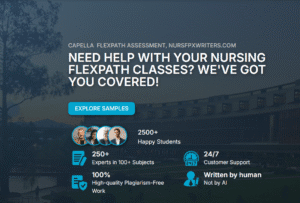Artificial Intelligence (AI) has taken massive strides in recent years, with OpenAI consistently leading the way through its advanced language models. Following the groundbreaking success of GPT-4 and GPT-4o, OpenAI has unveiled GPT-5 — a leap forward in natural language processing, reasoning, and multimodal capabilities. This latest version pushes the boundaries of AI assistance, offering unprecedented accuracy, adaptability, and creativity.
1. What is GPT-5?
GPT-5 is OpenAI’s newest large language model, designed to provide more human-like understanding, richer context awareness, and faster responses. It is trained on an expanded dataset with improved architecture, enabling it to understand complex instructions, solve sophisticated problems, and generate highly reliable results across multiple domains.
Unlike its predecessors, GPT-5 excels not only in text-based interactions but also in multimodal capabilities — meaning it can process and respond to text, images, audio, and potentially even video in real time.
2. Key Features of GPT-5
OpenAI has incorporated several innovations that make GPT-5 stand out:
a) Advanced Reasoning
GPT-5 improves on the already impressive reasoning capabilities of GPT-4. It can tackle complex problem-solving tasks, perform multi-step logical analysis, and offer deeper, more accurate insights.
b) Multimodal Understanding
The model can handle multiple input types, allowing it to interpret and generate text, analyze images, process spoken audio, and more. This makes GPT-5 a true all-in-one assistant.
c) Real-Time Responsiveness
OpenAI has optimized GPT-5 for speed, making interactions feel instantaneous. This is particularly useful for applications like live customer support, education, and collaborative work.
d) Longer Memory and Context
With an expanded context window, GPT-5 can remember and refer back to information from much earlier in the conversation. This enables more coherent and contextually accurate interactions.
e) Safer and More Reliable
Safety remains a top priority for OpenAI. GPT-5 includes improved guardrails, better factual accuracy, and refined content moderation tools to minimize misinformation and harmful outputs.
3. How GPT-5 Differs from GPT-4 and GPT-4o
While GPT-4o introduced multimodal capabilities and enhanced speed, GPT-5 refines these features and expands them. The key differences include:
-
Bigger and Smarter: GPT-5 has more training data, allowing for richer knowledge coverage.
-
More Accurate Reasoning: Especially in technical, scientific, and mathematical domains.
-
Better Adaptability: It adjusts its tone, style, and depth based on the user’s needs.
-
Improved Memory: Holds longer, more complex conversations without losing context.
-
Enhanced Safety: Stricter adherence to content guidelines.
4. Applications of GPT-5
The versatility of GPT-5 makes it suitable for numerous industries:
a) Education
GPT-5 can serve as a personal tutor, explaining concepts in detail, answering student queries, and creating interactive learning materials.
b) Business and Marketing
Companies can use GPT-5 for market analysis, content creation, customer service automation, and brainstorming innovative product ideas.
c) Healthcare
It can assist doctors by summarizing research papers, suggesting possible diagnoses (while leaving final judgment to professionals), and simplifying complex medical information for patients.
d) Creative Industries
From scriptwriting and music composition to game development, GPT-5’s creative potential is vast.
e) Research and Development
Its reasoning skills make it an excellent partner for scientific research, data analysis, and technical problem-solving.
5. GPT-5 and Multimodal AI
One of GPT-5’s most exciting abilities is handling multimodal input and output. For example:
-
You can upload an image of a chart, and GPT-5 will analyze it.
-
You can speak to GPT-5, and it will respond with both voice and text.
-
You can combine text, images, and audio in a single request for richer results.
This makes GPT-5 not just a chatbot but a fully interactive AI system.
6. Ethical Considerations and Safety
OpenAI has emphasized that GPT-5 is designed with stronger safeguards to reduce bias, misinformation, and harmful outputs. It features:
-
More robust content filtering.
-
Better handling of sensitive topics.
-
Clearer explanations of reasoning steps.
-
User transparency in how it generates answers.
7. The Future with GPT-5
GPT-5 is more than just an upgrade — it’s a foundation for the next wave of AI innovation. By combining speed, accuracy, and multimodality, it opens possibilities for smarter assistants, advanced research tools, immersive educational platforms, and more collaborative human-AI workflows.
As AI continues to evolve, GPT-5 sets a new benchmark for what’s possible, bringing us closer to AI systems that truly understand and work alongside humans.
8. Final Thoughts
OpenAI GPT-5 represents a significant step forward in artificial intelligence. With enhanced reasoning, multimodal capabilities, longer memory, and safer interactions, it’s poised to revolutionize how individuals, businesses, and researchers interact with AI. From boosting productivity to enabling creativity, GPT-5 shows that the future of AI is not just smarter — it’s more human-centered.






